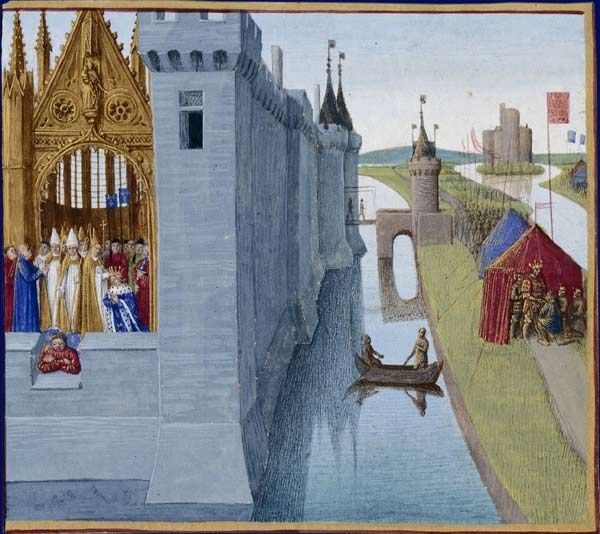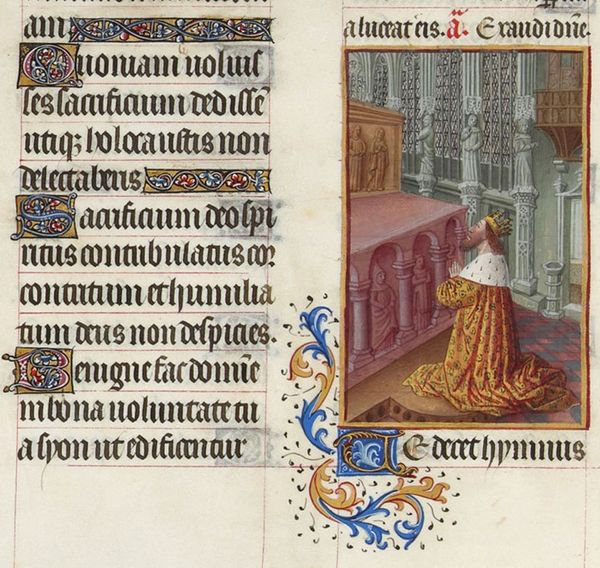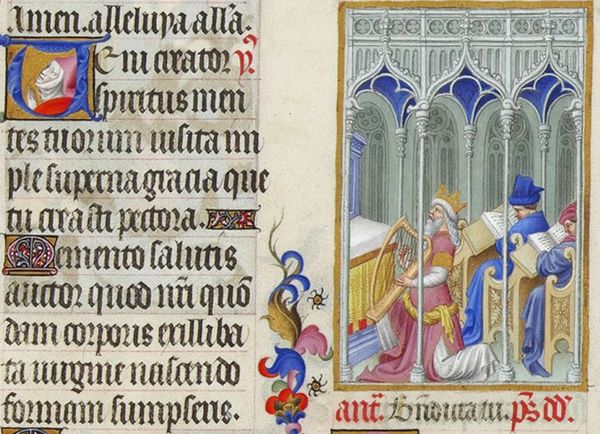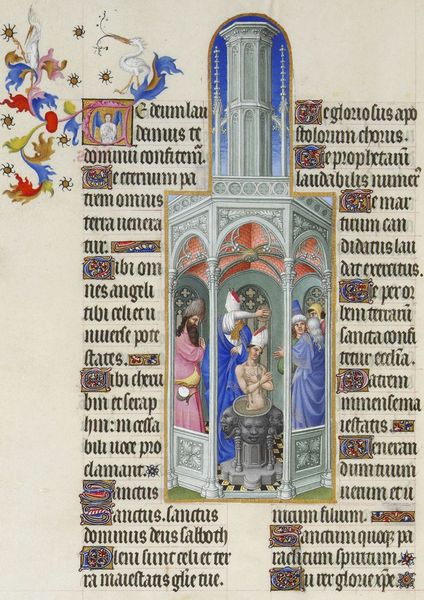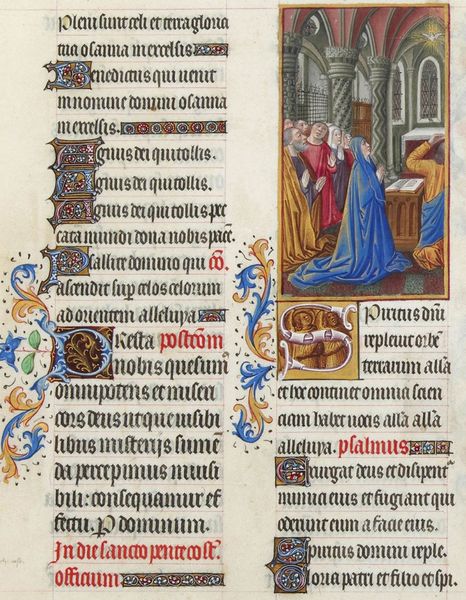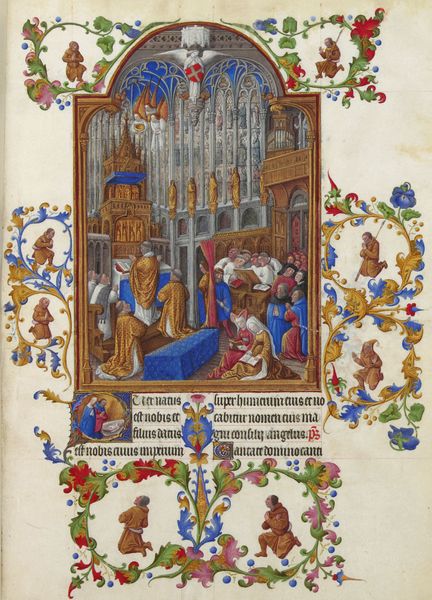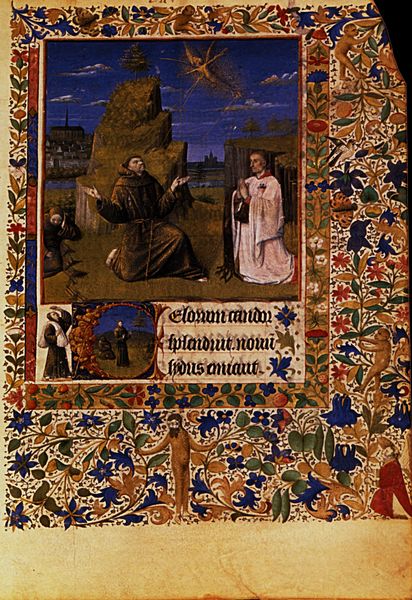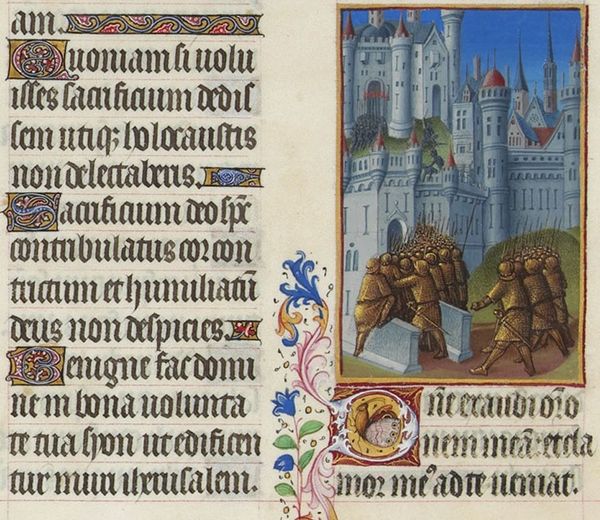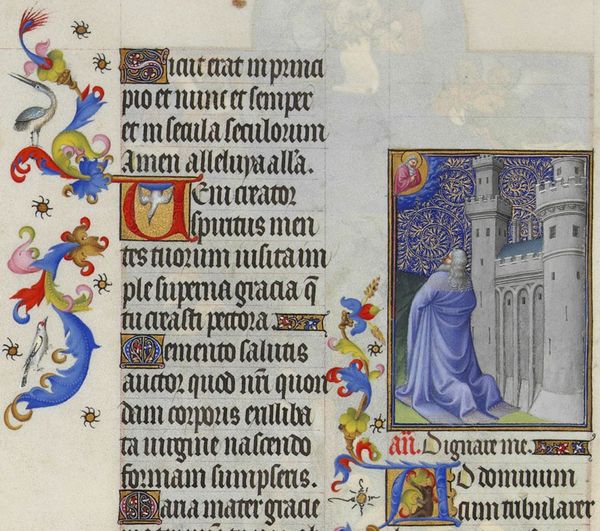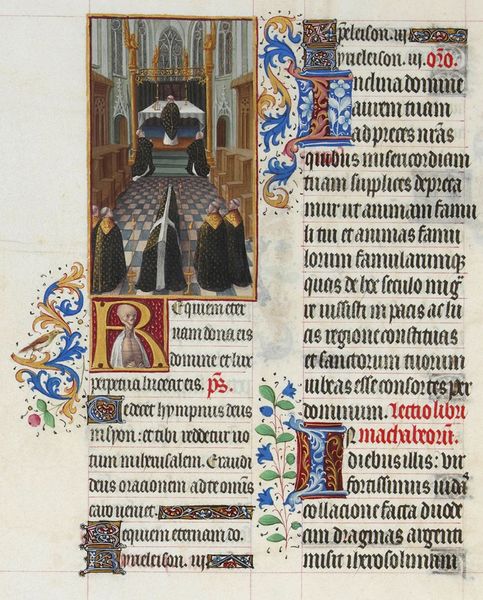
tempera, painting
#
narrative-art
#
tempera
#
painting
#
landscape
#
figuration
#
history-painting
#
international-gothic
#
mixed media
#
miniature
Copyright: Public domain
Curator: Here we have Jean Fouquet's "Coronation of Louis VI," created around 1460. It's a tempera painting currently housed in the Bibliothèque nationale de France. What strikes you about it initially? Editor: That looming fortress immediately draws my eye. It’s so solid, almost oppressive, juxtaposed with the tiny coronation scene tucked into the cathedral entrance to the left. I immediately think about power structures and the immense material wealth necessary to create such a structure. Curator: Precisely. Castles aren't merely stone, they symbolize dominance, strategic advantage, and social stratification, echoing in Fouquet’s depiction. Considering his broader symbolic choices, what is your sense of this work's message, culturally speaking? Editor: Well, tempera itself is interesting. It necessitates careful layering and consideration of materials, and its use speaks to a tradition rooted in craftsmanship, but also in wealth and specialized labor. That flatness, that characteristic “medieval” look, it's carefully constructed through material choices and the artistic process itself. Curator: That's a salient point. The medium’s deliberate choice enhances a symbolic reading as well, as this recalls earlier sacred image traditions. Consider the procession entering the cathedral – a prescribed ritual imbued with symbolism. Are those bishops wearing white mitres signifying purity and divine sanction, essential visual cues that communicated clearly to contemporary viewers. Editor: But think about the source of those materials. Pigments weren't just magically appearing. The gold in those details—where did it come from? The labour to extract it? Every element of production and how such luxury impacted how it was viewed should be considered. And for whom was this miniature crafted, meant for personal, intimate consumption by elites? Curator: Indeed, miniatures, like this one, served a didactic and devotional purpose for privileged readers. They visually reinforced a shared cultural memory tied to divine right and political legitimacy, ideas still so resonant then, and really, that resonance echoes today too. Editor: Yes, a memory literally inscribed with specific precious matter – reminding us that stories are often told by the materials they are made of. Curator: A powerful reminder that even something seemingly simple carries such layers of meaning, brought forth both visually and materially. Editor: Absolutely. It encourages us to ask questions, probe into not only "what" is being represented, but "how," "why," and at what cost.
Comments
No comments
Be the first to comment and join the conversation on the ultimate creative platform.

